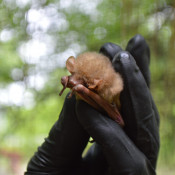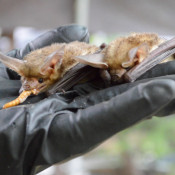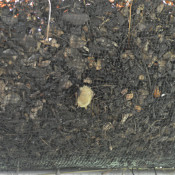Protecting Palm Trees to Protect Bats
By Maggy Wolanske
Reporting Texas TV
AUSTIN, Texas — After a year in which they were scorned as the source of the coronavirus, bats continue to have a rough time in 2021. Many of the mammals are losing their Austin homes.
The Austin Bat Refuge works to protect the local bat population and ensure the animals are loved. Co-founders Lee Mackenzie and Dianne Odegard created a permaculture installation that provides bats with an environment that feels like a part of nature.
Bats migrate during the winter to warmer cities that have a large insect supply. When a winter storm hit Texas in February, the Austin bat population struggled to stay warm through freezing temperatures.
“The bridge bats fell out by the hundreds and thousands. We may have lost hundreds of thousands of bats here in Central Texas,” Mackenzie said.
Refuge staff visited seven bridges after the winter storm to rescue any bats that fell. Bats couldn’t hang under icy bridges and ended up falling to the ground.
“We picked up a hundred, at least, at every bridge, every night, out of seven local bridges,” Mackenzie said.
He said the refuge’s hospital tent housed 4,000 bats and provided care until the animals were ready to return to the wild.
Bats play a significant role in Austin, where they typically kill between 6,000 to 8,000 bugs a night. Crowds often gather to see bats fly out from under the South Congress Avenue Bridge after sunset.
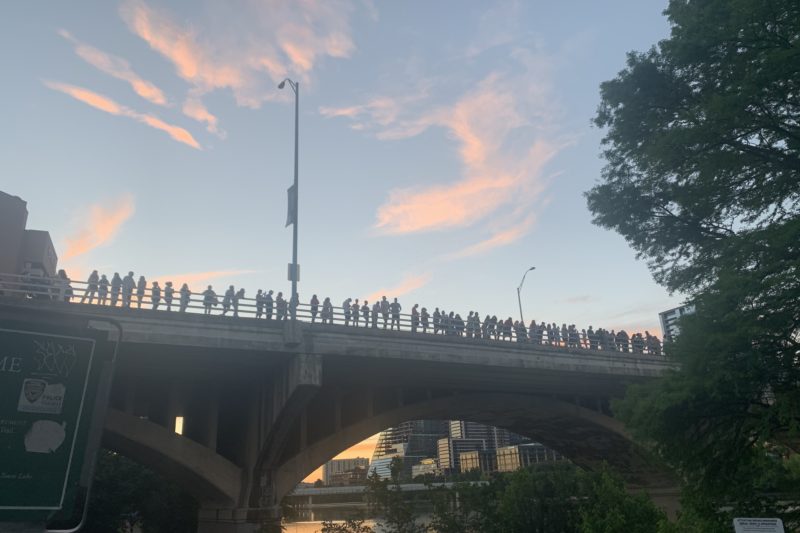
A crowd gathers at the South Congress Bridge to watch the bats emerge at sunset. (Photo: Maggy Wolanske)
The Austin Bat Refuge website provides the best times to watch the bats emerge.
As higher temperatures arrive in the summer, the city is working to remove dead vegetation from the winter storm. About 90% of Austin’s palm trees died during the winter storm. Their once-green leaves turned a dark brown.
Mackenzie said these dead trees serve as a habitat to the Austin bat population. He contacted the Austin Public Works Department to advocate for protecting palm trees, which serve as a home to two different yellowtail bat species, northern yellow bats and southern yellow bats.
“[Southern yellow bats] have evolved over millions of years to be the exact same color of these dead palm leaves. They are beautiful little bats,” Mackenzie said.
Austin Public Works Department program manager Lisa Killander said Refuge staff provided advice for how to spot bats and remove dead trees in a way to protect the animals.
“The recommendation is that the palm fronds be cut and lowered one at a time, so that the volunteers or the owners themselves can go through the fronds and get the bats out and relocate them because they’ll be sleeping in the middle of the day,” Killander said.
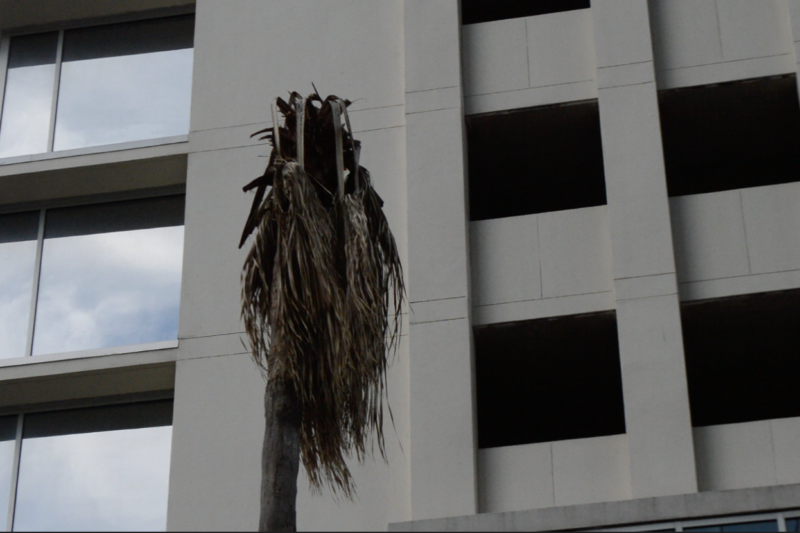
There are dead palm trees throughout the city of Austin. This palm is at Margaret Moser Plaza. (Photo: Maggy Wolanske)
Bats are nocturnal, and will often stay asleep during a daytime tree removal. This can result in the bats’ deaths.
“They won’t wake up the moment somebody comes up in a lift. [Mackenzie] even says a chainsaw won’t wake them up,” Killander said.
The Austin Bat Refuge website provides details about palm tree removal and has additional information on southern yellow bats.
Killander said the city is using these methods as it removes dead palm trees. Crews are currently in the process of completing ground inspections and preparing for the removal of more palm trees.
“We’re going to try and have a drone assist us and look at the tops of the palm trees, because that’s where the new growth is going to occur,” Killander said.
“We hope drones will help us with our taller palms that are near busy streets, a lot of high traffic, a lot of pedestrian traffic.”
Mackenzie wants people with palm trees on their property to consider turning their trees into bat habitats.
“We are working on some signage now for people to place on their yards of ‘my palm tree is a yellow bat habitat,’” he said.
He hopes teaching the public about bat habitat options will lead to better protection of dead palm trees so the southern yellow bats can thrive.
“There’s nothing better than sitting out under your palm tree at night and watching those little beauties flying away. We hope that people will embrace the palm trees just as much as they have the Congress Avenue Bridge bats,” he said.
